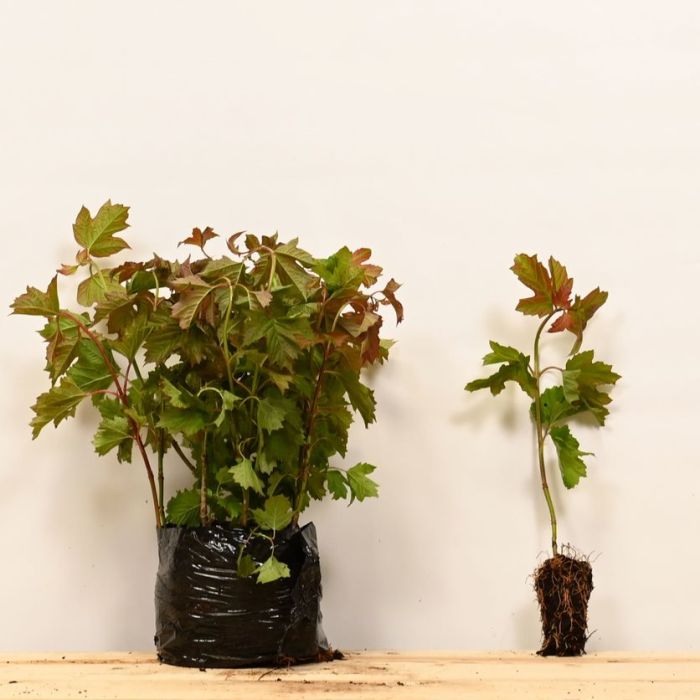
Guelder Rose Cell grown 20/40cm x 250 Viburnum opulus
In stock


Other Guelder Rose Hedge plants
Key Features
AVERAGE GROWING
HAS BERRIES
HAS FLOWERS (White)
Is Grazing Animal Friendly
Viburnum opulus Hedge Plants Description
Also known as the Snowball Tree, due to its frothy white flowers, Guelder Rose makes a beautiful ornamental hedge. Later in the year, the red berries that accompany Guelder Rose's warm autumnal colours are relished by birds, especially bullfinches and mistle thrushes.
It is a self-pollinating species, so although Guelder Rose can be a single plant in a mixed hedge, having multiple plants will provide the best fruiting. Guelder Rose can be combined with other native hedging species to prove year round interest, or other flowering species for a stunning mixed hedge.
Growing up to 5m high with an average growth between 20cm - 40cm per year, Guelder Rose hedging grows well in most soil types - except for very acidic types - but will particularly thrive in moist, fertile soil. Ideally, it should be grown in sunlight, but it is also suitable for lightly shaded areas.
Bare root Guelder Rose hedging plants are available from November to mid/late May, whilst pot-grown and cell-grown plants are available all year round.
Vital Plant Information
Reviews
Plant Guarantee
Hedges Direct always supplies quality plants, however we know that sometimes plants have a mind of their own. With the Hedges Direct Green Guarantee, we've got you covered. Our 12-month guarantee is our 100% promise to you, that you can buy with complete confidence, that if any plants fail within 12 months, we will replace them when the guarantee conditions are met.
-
Step 1
Root Grow & Fertiliser
Ensure you buy root grow and fretiliser with your plants at the time of purchase
-
Step 2
Prepare Your Planting Area
Make sure your planting area is in good condition and suitable for planting
-
Step 3
Plant & Feed
Plant with root grow & the second feed. Support plants if necessary. Water regularly
You May Need
Pruning Advice
The ideal time to do this is after flowering in late spring. Ensure that any dead, diseased or broken branches. are removed as part of the process. In addition, to keep a good air circulation which helps to prevent disease, look for and trim out any overcrowded branches. Up to a third of the shrub can be trimmed out yearly if necessary without any negative impact.
Trimming flowering branches back at the tips will naturally impact on berry production that autumn, however the upside is that new growth will develop throughout the remainder of the year on which an abundance of flowers and berries will then be produced the following year.
For old, overgrown plants that have slowed in their flower production and have a leggy, woody appearance, regenerative pruning can be undertaken. This is where old wood is significantly cut back almost to the ground, with particular care taken to remove any weak or straggly branches. This allows the plant to re-establish itself with renewed vigor and growth in subsequent years to become a stunning specimen once again.
This type of hard pruning is best done later in the year but before winter so that some new growth can establish prior to the plant becoming dormant. This will ensure that it bounces back again the following spring.
 Hedges Direct
Hedges Direct 










